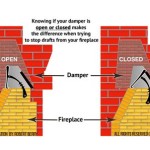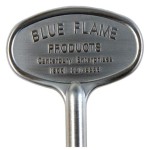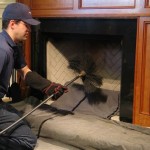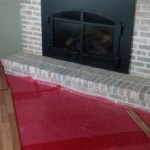```html
Stacked Stone Fireplace Surround Kits: A Comprehensive Guide
Stacked stone fireplace surrounds have become increasingly popular, offering a visually appealing and texturally rich aesthetic to any living space. These surrounds provide a natural, rustic charm that can complement both modern and traditional interior designs. A significant driver of this trend is the availability of stacked stone fireplace surround kits, which allow homeowners to achieve a professional look with relative ease, often bypassing the complexities and costs associated with hiring a professional mason.
This article provides a comprehensive overview of stacked stone fireplace surround kits, covering their benefits, types, installation processes, maintenance requirements, and factors to consider when selecting the right kit for a particular home. Understanding these aspects is crucial for making an informed decision and ensuring a successful installation that enhances the beauty and value of a home.
Key Benefits of Using Stacked Stone Fireplace Surround Kits
Using a stacked stone fireplace surround kit offers several distinct advantages compared to traditional methods of building a stone surround. These advantages often center around cost-effectiveness, ease of installation, and design flexibility.
Cost-Effectiveness: One of the primary benefits of using a kit is the potential for cost savings. Traditional stonework requires skilled labor, which can significantly increase the overall cost of the project. Kits, however, are designed for DIY installation, reducing or eliminating labor expenses. Furthermore, the pre-cut and pre-arranged stones in a kit minimize material waste, contributing to further cost reductions. The predictable pricing of a kit also allows homeowners to budget accurately for the project, avoiding unexpected expenses that can arise during a custom stonework project.
Simplified Installation: Stacked stone fireplace surround kits are designed for ease of installation. The individual stones or panels are often pre-cut and pre-arranged, simplifying the process of creating a uniform and aesthetically pleasing surround. Many kits feature interlocking designs that further streamline installation, making it accessible to homeowners with basic DIY skills. Detailed instructions and sometimes even video tutorials are typically included with the kits, guiding homeowners through each step of the process. This simplified installation significantly reduces the time and effort required compared to traditional stonework.
Design Versatility: Despite being pre-designed, stacked stone fireplace surround kits offer considerable design versatility. Kits are available in a wide range of stone types, colors, and textures, allowing homeowners to select a style that perfectly complements their existing decor. Furthermore, many kits can be modified to fit specific fireplace dimensions and design preferences. Some manufacturers also offer custom design options, allowing homeowners to create a truly unique and personalized fireplace surround. This design flexibility ensures that the finished product seamlessly integrates into the overall aesthetic of the home.
Types of Stacked Stone Used in Fireplace Surround Kits
The aesthetic appeal of a stacked stone fireplace surround is heavily influenced by the type of stone used. Different types of stone offer varying colors, textures, and patterns, each contributing to a unique visual effect. Understanding the characteristics of different stone types is essential for selecting a kit that aligns with a desired aesthetic and complements the existing decor.
Natural Stone Veneer: Natural stone veneer is a popular choice for fireplace surround kits. It is created by thinly slicing natural stone, such as granite, limestone, or slate, and adhering it to a backing material. Natural stone veneer offers the authentic look and feel of natural stone without the weight and expense of full-thickness stone. Each piece is unique, featuring natural variations in color and texture, adding character and depth to the surround. While offering a natural aesthetic, it can sometimes be more challenging to install than manufactured stone due to slight variations in thickness and shape.
Manufactured Stone Veneer: Manufactured stone veneer, also known as faux stone, is a synthetic product designed to replicate the look and feel of natural stone. It is typically made from concrete or other cementitious materials and is molded to resemble various stone types. Manufactured stone veneer offers several advantages over natural stone, including lighter weight, consistent sizing, and a wider range of color and texture options. It is also generally more affordable than natural stone veneer. The consistency in size and shape makes manufactured stone easier to install, particularly for DIY projects. However, some may perceive it as lacking the authentic character of natural stone.
Panelized Stone Systems: Whether natural or manufactured, stone can be assembled into panels for even easier installation. These panels, typically interlocking, simplify the application process, reducing the time and expertise required. Panelized systems often come with pre-attached mesh backing for added stability and ease of handling. This method is particularly beneficial for large or complex fireplace surrounds, as it minimizes the number of individual pieces that need to be installed.
Installation Process of Stacked Stone Fireplace Surround Kits
Proper installation is crucial for achieving a professional-looking and long-lasting stacked stone fireplace surround. While installation kits simplify the process, careful planning and attention to detail are still required. The following steps provide a general overview of the installation process, but specific instructions may vary depending on the kit manufacturer and the existing fireplace structure.
Preparation: The first step is to thoroughly prepare the area around the fireplace. This involves cleaning the existing surface to remove any dust, grease, or loose paint. If the existing surface is not suitable for adhering the stone, such as painted drywall, it may be necessary to install a cement board backing. Cement board provides a stable and moisture-resistant surface for the stone to adhere to. Ensure the cement board is securely fastened to the wall studs using appropriate screws.
Dry Fitting: Before applying any adhesive, it is highly recommended to dry-fit the stone or panels. This involves arranging the stone or panels on the floor or against the wall in the intended pattern. Dry fitting allows homeowners to visualize the final look, make any necessary adjustments, and identify any potential issues before committing to the installation. It also helps to ensure that the stone or panels fit properly around the fireplace opening and other architectural features. Mark the desired layout on the cement board to serve as a guide during the actual installation.
Adhesive Application: Once the dry fit is complete, apply a generous layer of thin-set mortar to the back of each stone or panel using a notched trowel. The thin-set mortar acts as the adhesive that bonds the stone to the cement board. Ensure that the mortar is evenly distributed and that the notches are aligned in the same direction. Apply the stone or panels to the cement board, pressing firmly to ensure good contact. Use spacers to maintain consistent joint widths between the stones or panels. Remove any excess mortar that squeezes out from the joints.
Cutting and Trimming: In some cases, it may be necessary to cut or trim the stone or panels to fit around the fireplace opening or other architectural features. A wet saw with a diamond blade is the recommended tool for cutting stone, as it provides clean and precise cuts. Always wear safety glasses and gloves when cutting stone. Measure and mark the desired cut line on the stone before cutting. After cutting, smooth any rough edges with a rubbing stone.
Grouting (Optional): Depending on the desired look, grout can be applied to fill the joints between the stones or panels. Grouting enhances the visual appeal of the surround and helps to prevent moisture from penetrating behind the stone. Choose a grout color that complements the stone color. Apply the grout using a grout float, pressing it into the joints and removing any excess. After the grout has partially dried, use a damp sponge to clean the surface of the stone. Allow the grout to fully cure according to the manufacturer's instructions.
Maintenance and Care of Stacked Stone Fireplace Surrounds
Proper maintenance and care are essential for preserving the beauty and longevity of a stacked stone fireplace surround. Regular cleaning and preventative measures can help to protect the stone from stains, damage, and deterioration.
Regular Cleaning: Dust and dirt can accumulate on the surface of the stone over time, dulling its appearance. Regular cleaning with a soft brush or vacuum cleaner can help to remove this buildup. For more thorough cleaning, use a mild detergent and warm water. Avoid using harsh chemicals or abrasive cleaners, as they can damage the stone. Wipe the surface of the stone with a damp cloth and then dry it with a clean towel.
Sealing: Applying a sealant to the stone can help to protect it from stains and moisture. Sealants create a barrier that prevents liquids from penetrating the stone, making it easier to clean and maintain. Choose a sealant specifically designed for stone and follow the manufacturer's instructions for application. Reapply the sealant periodically, typically every one to two years, to maintain its effectiveness.
Spot Cleaning: If stains do occur, address them promptly to prevent them from becoming permanent. Use a stain remover specifically designed for stone and follow the manufacturer's instructions. For oil-based stains, try using a poultice made of baking soda and water. Apply the poultice to the stain, cover it with plastic wrap, and let it sit for several hours or overnight. Then, remove the poultice and wipe the area with a damp cloth.
Repairing Damage: If the stone becomes chipped or cracked, it is important to repair the damage as soon as possible to prevent further deterioration. Small chips and cracks can often be repaired with a stone repair kit. For larger damage, it may be necessary to replace the damaged stone. Consult with a professional stone mason for assistance with more complex repairs.
```
Natural Stacked Stone Veneer Fireplace Ideas

Natural Stacked Stone Veneer Fireplace Ideas

Jerre S Faux Stone Fireplace Surround Genstone

Some Stone Fireplace Surround Ideas You Ll Love Southwest Supply

Some Stone Fireplace Surround Ideas You Ll Love Southwest Supply

B S Diy Stacked Stone Fireplace Surround Genstone

Stone Fireplace Design And Remodel

Diy Faux Stone Fireplace Home Decor

Natural Stacked Stone Veneer Fireplace Ideas

Manufactured Stonework For Fireplace Surrounds Skilled Stone Masons
Related Posts








